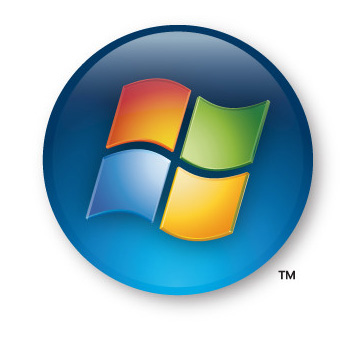How to use downloaded SUSE Studio appliances
![]()
![]() 开始
开始
![]() 常问问题 FAQ
常问问题 FAQ
![]() 速览
速览
![]() 入门帮助教程
入门帮助教程
![]() API 接口
API 接口
![]() Bug
Bug
![]() SUSE Studio 交流频道
SUSE Studio 交流频道
![]() 下载
下载
![]() 目录索引
目录索引
![]() 如何编辑此文档
如何编辑此文档
Contents
 LINUX users | Next steps after the download
LINUX users | Next steps after the download
Instructions for Windows(TM) users...
How to extract compressed files with Linux?
- Normally the GUI (Gnome or KDE) will provide an easy extraction via a right-click onto the file in the file manager.
- In the console you can use gunzip
 LiveCD/DVD
LiveCD/DVD
- Extension of downloaded file: .iso
- How to use with a
 LINUX system
LINUX system
- It is a compressed filesystem, no extraction is necessary
- Burn the .iso file with a burning application (e.g. Gnome- or KDE-tool) to a media
- You will receive a bootable CD or DVD with a SUSE Live-System
- Check your BIOS if your machine will not boot via CD
 Disk Image (USB or Harddisk)
Disk Image (USB or Harddisk)
- Extension of downloaded file: .oem.tar.gz
- After extraction you will see one new file: .raw
- How to with in a
 LINUX system
LINUX system
- The GUI way:
- Search for kiwi-tools-imagewriter at http://software.opensuse.org/search and use the one-click-install button.
You can also download the rpm via the search result list. - You can then run imagewriter as root and write your chosen image to your chosen USB device.
- Search for kiwi-tools-imagewriter at http://software.opensuse.org/search and use the one-click-install button.
- The dd way:
- Copy the .raw image with dd to the disk or usb stick (place link here)
Be careful when using 'dd'. You can lose your data! - Based on some experience with defect USB sticks we recommend to check the MD5SUM
- Check the BIOS of your system if it does not boot via USB
- Copy the .raw image with dd to the disk or usb stick (place link here)
- The GUI way:
 VMware Image
VMware Image
- Extension of downloaded file: .vmx.tar.gz
- After extraction you will see a new subdirectory with 2 files: .vmdk and .vmx
- How to with in a
 LINUX system
LINUX system
- You will need the VMware Player to start this image. Download it here
- If this tool is installed, the .vmx should be associated with it and start with one click.
 Xen image
Xen image
- Extension of downloaded file: .xen.tar.gz
- After extraction you will see a new subdirectory with 2 files: .raw and .xenconfig
 Windows(TM) users | Next steps after the download
Windows(TM) users | Next steps after the download
Recommendations for Windows(TM) users:
The SUSE Studio appliance builder will produce products based on SUSE Linux.
If you want to download, extract and test image files with a Windows system we recommend to use the formats
Of course you can also create a bootable ![]() USB stick and hard disk
with Windows, but you will need advanced knowledge to handle the dd-copy tool.
USB stick and hard disk
with Windows, but you will need advanced knowledge to handle the dd-copy tool.
How to extract compressed .tar.gz files with Windows
By default Windows is not able to extract .tar.gz files. Perhaps you can use 7-zip. It is available in many languages and it is under the GNU LGPL license.
- The extraction of the .tar.gz file will work in two steps:
- First: from .tar.gz to .gz
- Second: from .gz to .raw or new subdirectory with files
 LiveCD/DVD
LiveCD/DVD
- Extension of downloaded file: .iso
- How to use with a
 Windows system
Windows system
- It is a compressed filesystem, no extraction is necessary
- Burn the .iso file with a burning application to a media. In most cases the .iso extension is associated with the correct application via double-click
- You will receive a bootable CD or DVD with a SUSE Live-System
- Check your BIOS if your machine will not boot via CD
 VMware Image
VMware Image
- Extension of downloaded file: .vmx.tar.gz
- After extraction you will see a new subdirectory with 2 files: .vmdk and .vmx
- How to use with a
 Windows system
Windows system
- You will need the free VMware Player to start this image.
- If this tool is installed, the .vmx-file should be associated with it and your appliance will start with a double-click.
 Disk Image (USB or Harddisk)
Disk Image (USB or Harddisk)
- Extension of downloaded file: .oem.tar.gz
- After the extraction process you will see one new file: .raw
- How to use with a
 Windows system
Windows system
- You will need and additional tool in your Windows system to copy the raw image file in a special way to an USB stick or a hard disk.
The dd for windows can do this - Be aware: In difference to the other ways (LiveCD/DVD and VMware image) you can damage your system if you make a mistake
- Follow this instructions for advanced users...
- You will need and additional tool in your Windows system to copy the raw image file in a special way to an USB stick or a hard disk.